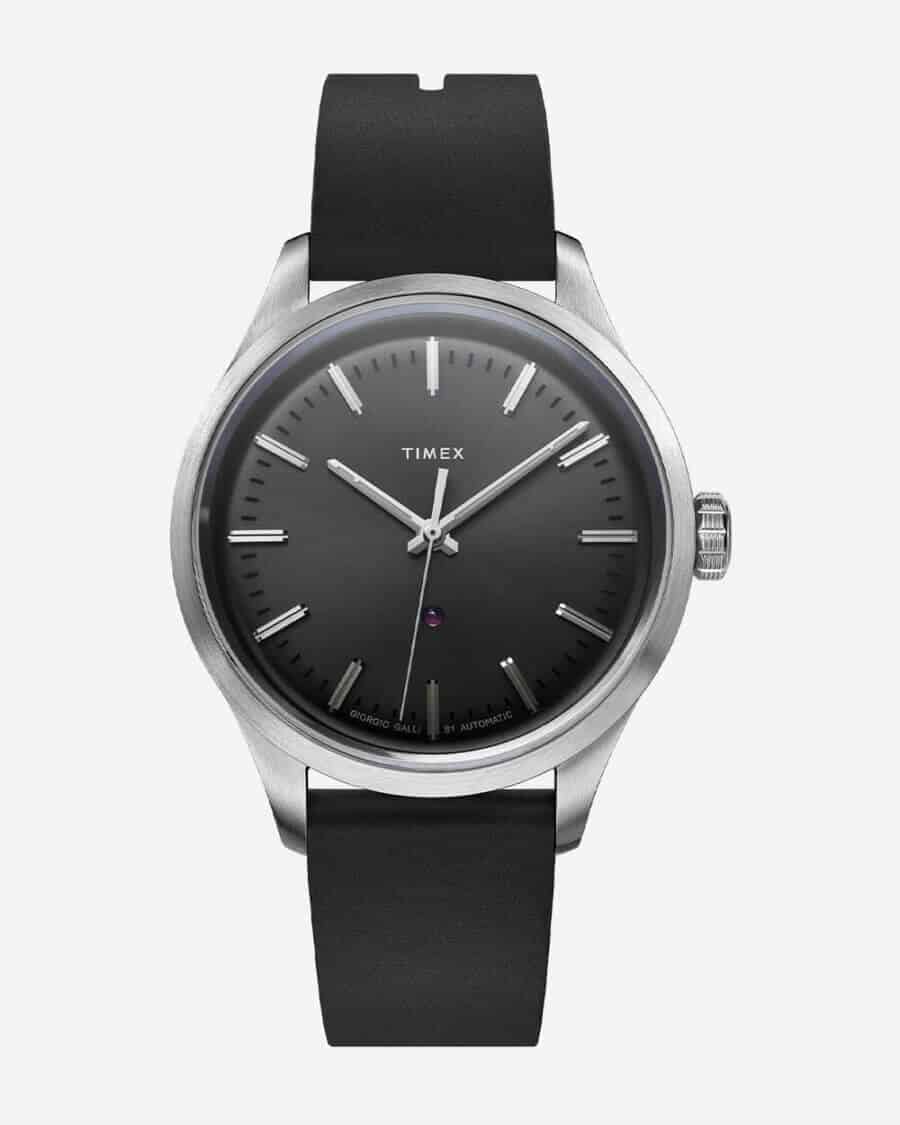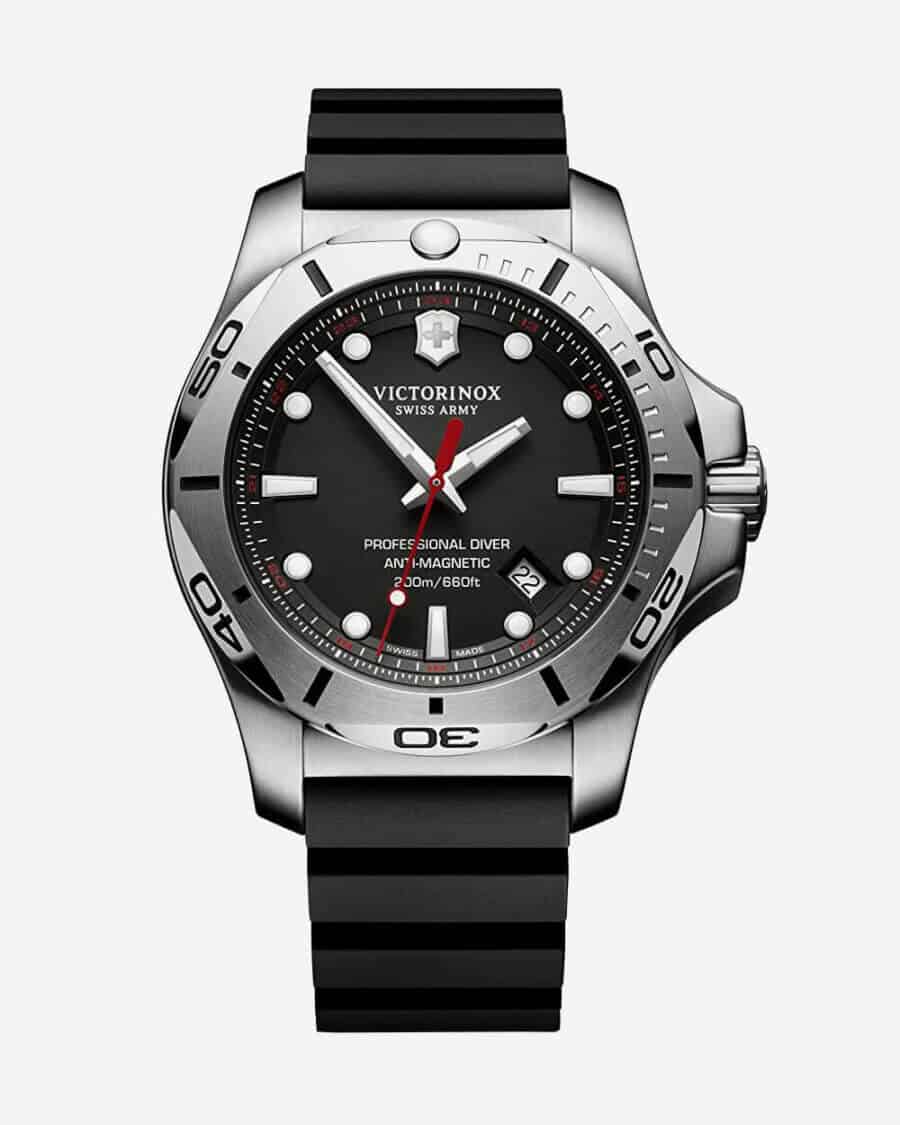
The Affordable Watch Brands Making High-Quality Timepieces For Less
Meet the watchmakers producing stylish watches that don't cost the earth. Although they maybe cheap, the build quality is anything but, so you can trust these timepieces to keeping on ticking for the long haul.
Affordable is such a subjective word. We all have such different ideas of what it means and that meaning also changes depending to what it is applied. People who love food might think a £40/$40 set lunch menu at a Mayfair restaurant is affordable because you get to try upmarket food at a decent price. If you’re inclinations are more ‘Big Mac and fries’ then you’re maybe not going to see things the same way. Same with sneakers. There are those who wouldn’t baulk at spending serious money on a pair that are both collectible and practical; and those who think a pair of Dunlop Green Flash is an extravagance.
With watches this word becomes even more loaded. So, to clarify parameters – the brands below all produce timepieces that don’t have extortionate luxury watch boutique prices. Some of them may have watches in their collections that head over the £1,000/$1,000 line, but generally speaking they produce democratically priced timepieces with reliable build quality; watches that, if you invest in them, will end up doing well in a cost-per-wear evaluation.
There is a whole swathe of fashion brands we haven’t included and there may even be some oversights. After all, ‘affordable’ is a word with myriad possibilities.
Timex
If your first watch wasn’t a Swatch, then it was probably a Timex. Originally called the Waterbury Clock Company, Timex shook the industry up when it arrived on the scene in 1854 in Connecticut, with its production-line approach to clockmaking.
Inexpensive, durable but good looking has been its USP and that hasn’t changed today. The collection ticks every box from colour pop digitals and 70s reissues to seriously bargainous automatics. Timex was so highly thought of that in the 1990s it was issued to the US Army and apparently serving personnel still wear Timex today.
Collection to know: while the retro-inspired Marlin collection does receive a lot of attention, it’s the S1 that’s the Timex to own. Created by its Milan-based designer to be the quintessence of everything Timex stands for, it is refined design at its best.
Mondaine
You can’t get more Swiss than a brand whose dials are wrist-sized versions of the SBB train-platform clocks and whose numerals are in Helvetica, the globally recognised and obsessed over sans-serif font created in 1957 by Swiss designer Max Miedinger.
Since its launch, Mondaine’s minimalist, modernist designs, with the jolly colour pop provided by the chunky red hand, have become iconic. The SBB-based collection was joined in 2014 by Helvetica, inspired by the font as well as all things Swiss, for which ‘helvetica‘ is the Latin word.
In recent years, it has embraced sustainable materials, creating castor oil cases and straps from recycled PET bottles.
Collection to know: the Original, the SBB design seen in stations across Switzerland. Quartz is more traditional, but it now comes in an automatic too.
Tissot
This Swatch Group member’s incredibly priced designs will have you wondering how it manages to pack in so much horological bang for relative few bucks. While it started life in 1853 in Le Locle, its merger with Omega in 1930 was the basis of the Swatch Group, and it was playing with smart technology with its T-Touch when Apple was launching 15″ iMacs.
However, Tissot’s most influential invention is the Powermatic 80. This robust and accurate movement, based on ETA’s famed 2824, has no regulator (it is regulated in the factory by laser) and 80 hours of power reserve – a feat achieved by dropping the frequency from 4Hz to 3Hz.
Collection to know: Tissot has a watch for every occasion, whether you have a hankering for something vintage or want to deep dive, yet the stand-out is the PRX Powermatic 80 – a slice of louche 70s-inspired steel with an era-appropriate price tag to match.
Seiko
Like Tissot, Seiko has everything your watch wardrobe could possibly need with prices that make you think, “I’ll have one in every colour, please”. Every component of a Seiko watch is made and assembled in-house – from the movements and parts to hairsprings – in one of the many factories scattered about Japan that make up the brand’s empire. In typically Seiko fashion, it even grows its own quartz.
Whether quartz or metal, every watch is meticulously finished, precision engineered and equipped with that uniquely Japanese sense of aesthetic balance and restraint, even when dealing with the ‘everything and maybe even the kitchen sink’ functionality of the Astron.
Collection to know: the Seiko 5, which was designed to appeal to the young generation of the 1960s. While the 5 collection has myriad iterations, it’s the chunky colourful sports designs that are most true to its original purpose.
Swatch
Plastic, colourful and the single-handed saviour of the Swiss watch industry. Swatch was created by Elmar Mock, Ernst Thomke and Jacques Müller, in 1983, in an attempt to compete with the cheap quartz watches from Citizen and Seiko that had flooded the entry-level market.
There’s no real need to document its success. All you need to know is when Nicholas Hayek Sr took a majority share in Swatch, he renamed a company that included names like Omega after this plastic upstart, so vital was it in rebooting the Swiss watch economy. It now has nine separate product lines, from the super-slim Skin to the metal-cased Irony.
Collection to know: it has to be the ground-breaking Sistem51. Swatch’s automatic watch with a movement assembled entirely by machines and featuring 51 components anchored to a central screw.
Victorinox
From the brand famed for making the Swiss Army knife comes watches are as durable and practical as the weaponry. The idea was first mooted in 1989 by the Forschner Group, who were Victorinox’s long-term US distributor, but neither it nor Victorinox made watches, so they had to turn to Swiss private label watchmaker Xantia to make this timepiece dream a reality.
The subsequent history of how the company came to be what it is today is one hotly debated on forums, but all that needs to be known here is that the brand produces solidly built watches usually with rugged outdoorsy purposes.
Collection to know: I.N.O.X. The name comes from the French for stainless steel. Some of the straps are made from extremely durable paracord, which, if you find yourself in a bind, can be unwound and used, plus it just looks like a no-nonsense timepiece that Bear Grylls would be happy to wear.
Junghans
Want to own a piece of design history for less than the price of dinner at a Michelin-starred restaurant? Look no further than Junghans. Established in Schramberg in the Black Forest in 1861, it originally made cases, hands and pendulums for clockmakers of the region before eventually building up to wristwatches in the 1920s.
It was the partnership with Swiss creative polymath, Max Bill, that made Junghans’ name. Bill designed table clocks, wall clocks and watches for the brand – all of which were characterised by his love of precise proportions and clarity of design, informed, in turn, by Bill’s love of incorporating mathematic and geometric principles into his art.
The 70s and 80s saw the brand ditch automatics for quartz but two takeovers in the 00s – EganaGoldpfeil Holding in 2008 and then Hans-Jochem Steim and his son Hannes in 2009 – saw the brand going back to its Black Forest roots and the genius of Max Bill.
Collection to know: Max Bill. The whole collection is a watch-shaped representation of the phrase, ‘less is more’. Characterised by clean dials, the subtle doming of the sapphire and slender hands and indices, they are a masterclass in how to make the most out of the simplest details.
Citizen
Japanese watch brand Citizen is perhaps most famous for its Eco-Drives and extreme accuracy. The latter is achieved by fitting some of its designs with radio-controlled atomic clock synchronisation – the precise time, day and date measured by an atomic clock accurate to one second every 100,000 years is sent directly to the watch using standard radio waves.
This signal is picked up overnight and the watch corrects itself accordingly. All that technology combined with an Eco-Drive movement – itself powered by a lithium-ion battery charged by solar cells – makes for a highly accurate timepiece that will never let you down.
Collection to know: whether you’re on land, on sea or in the air, the Promaster line has a watch for you. From complex pilot watches to more simple designs, every timepiece is durable, affordable and sustainable.

























